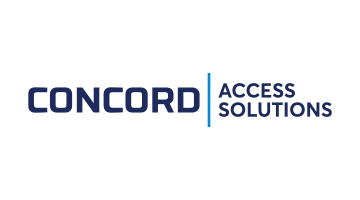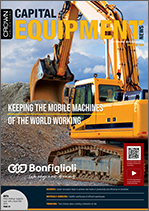 On the Cover: Bonfiglioli South Africa’s operations director Tony dos Santos introduces some of Bonfiglioli’s Mobility solutions and the comprehensive range of electric and hydraulic planetary drives it can now offer directly to equipment OEMs with operations in sub-Saharan Africa.
On the Cover: Bonfiglioli South Africa’s operations director Tony dos Santos introduces some of Bonfiglioli’s Mobility solutions and the comprehensive range of electric and hydraulic planetary drives it can now offer directly to equipment OEMs with operations in sub-Saharan Africa.
“Bonfiglioli Trasmital has been designing and producing planetary gearboxes for earth moving, road surfacing, agricultural and construction machinery since 1975. With the further acquisition of O&K in 2016, the benchmark planetary drive for heavy-duty machines, our global Mobility and Wind Business Unit (BU) has become a key partner to leading mobile equipment OEMs and machine manufacturers around the world,” says Tony dos Santos, Bonfiglioli’s local operations director.
In addition, one in four of the world’s wind turbines, from mini turbines to enormous 7 MW wind power units are equipped with Bonfiglioli planetary drives for both the pitch and yaw control, making the company the leading provider of these drive solutions for wind turbines in the world.
“Our team of experts creates, designs and produces advanced technology solutions for a wide range of OEM equipment and customised machines,” he continues.
“Planetary slew drives such as Bonfiglioli’s 700T Series and the higher torque S Series drives provide the safest, most effective solution for building robust and reliable cranes, while for earth-moving machines, Bonfiglioli 700C Series and F Series track drives are purpose designed to meet the needs of virtually any excavator,” he adds.
“With the combination of Bonfiglioli Trasmital and O&K in our mobility range, we supply drives for off-road, construction, mining, agricultural and heavy-duty mobile vehicles to almost all mobile vehicle OEMs, including John Deere, Komatsu, Caterpillar, Hitachi, JCB, Doosan, Toyota, Volvo and many others.”
Grader innovation helps to achieve new levels of productivity and efficiency on worksites
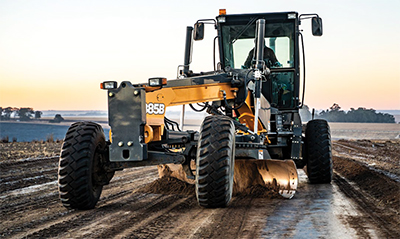 The functional advantages of motor graders or “graders” are accelerating the global growth in demand for these items of equipment. This market is anticipated to achieve a healthy annual compound growth rate through to 2027. Motor graders also remain vital items of equipment for many different South African industries, including mining, civil-engineering construction and building, as well as agriculture.
The functional advantages of motor graders or “graders” are accelerating the global growth in demand for these items of equipment. This market is anticipated to achieve a healthy annual compound growth rate through to 2027. Motor graders also remain vital items of equipment for many different South African industries, including mining, civil-engineering construction and building, as well as agriculture.
Graham Forte, MD of CASE Construction, says that market drivers for the company’s graders include price point, return on investment, versatility and total cost of ownership (TCO).
John Deere Construction & Forestry sales manager Griffiths Makgate says that major markets for the company’s grader offering include mining, government-driven civil-engineering infrastructure projects, general building and the agricultural sector where graders are being used to grade gravel access roads.
He says that improvements in grader technology that have helped address the dire shortage of skilled operators are also behind the tremendous growth in this market over the years. Lack of skilled grader operators, including final-level specialists, was previously a major hurdle, especially for road-construction contractors in the country.
In southern Africa, a significant number of Caterpillar graders are also being sold to municipal teams for general road construction and maintenance. Jean Baptiste Chaffardon, Caterpillar’s motor grader product application specialist, says that construction companies choose to directly own or rent these machines. This depends largely on the state of construction activity.
Forklifts: workhorses of efficient warehouses
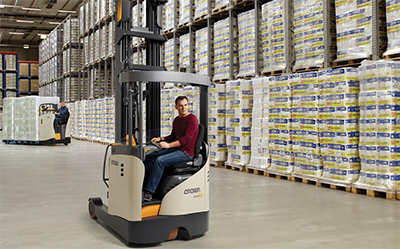 The forklift is an entrenched and essential part of any sophisticated warehouse, the heart of the transport logistics value chain. It is therefore essential to select the correct forklift type for the job at hand and to be aware of the latest innovations in the field. This feature explores forklift selection, takes a look at the current forklift market and its drivers, and highlights the emergence and advantages of the electric forklift.
The forklift is an entrenched and essential part of any sophisticated warehouse, the heart of the transport logistics value chain. It is therefore essential to select the correct forklift type for the job at hand and to be aware of the latest innovations in the field. This feature explores forklift selection, takes a look at the current forklift market and its drivers, and highlights the emergence and advantages of the electric forklift.
The crucial factors to consider when choosing the right forklift for the job at hand, says Criterion Equipment divisional MD Brenton Kemp, include the application – whether special attachments or other measures of customisation such as additional valves, filtration systems or forklift management systems will be required, as well as the environment in which the forklift will be operated. The latter, he says, would depend on the nature of the floor surface and the height of openings, among others.
Other factors include the width of warehousing isles, and the height of the racking and angulation (gradient) at which the forklift will be used. He also notes factors such as loadable mass and lift height which determine the required machine capacity to get the job done, and the load centre of the goods being lifted, which impacts deration and the height to which loads can be lifted.
Other aspects for consideration include environmental factors or legislation governing propellant type, as is the case in the food industry where the use of electric forklifts is prescribed, and operating hours. These greatly impact residual values in the case of leases, and maintenance costs on the machine. Premium-tier models are therefore suggested for high-hour applications.
Tipper Truck efficiencies, the quest for payload size and future innovations
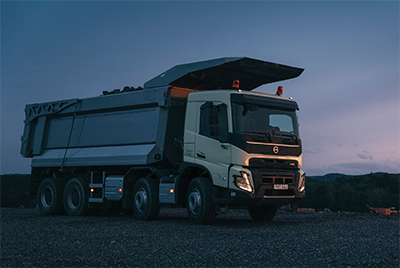 Tipper trucks have a crucial role to play on almost every construction site and mining operation where aggregate, soil, crushed rock and other bulk materials are transported. Manufactured in a variety of sizes and configurations, most modern models strive to reduce body weight and increase payload. This feature looks at the tipper truck market, efficiencies, payload size and future developments in this sector.
Tipper trucks have a crucial role to play on almost every construction site and mining operation where aggregate, soil, crushed rock and other bulk materials are transported. Manufactured in a variety of sizes and configurations, most modern models strive to reduce body weight and increase payload. This feature looks at the tipper truck market, efficiencies, payload size and future developments in this sector.
UD Trucks Southern Africa MD Filip van den Heede says that, despite taking a knock in 2020 due to the pandemic that forced multiple lockdowns and logistics and supply chain challenges, tipper sales recovered to normal levels in 2021.
“The market has registered significant growth of close to 10% in 2021 compared with 2020 sales and was slightly up compared with sales for 2019,” he says. “We look forward to additional growth for the tipper segment in 2022 and anticipate a positive recovery in global supply chains.”
Isuzu Motors South Africa senior vice president, Sales and Marketing, Craig Uren says sales are very much driven by activities in the construction industry and infrastructure spend by government entities, both of which have been slow.
“We therefore monitor trends we have in our data and use these in our forecasting of the Isuzu Ready to Work tipper range.”
He says that, based on these trends, the company builds Ready to Work stock of the NPR400 SWB 4x2 – 3 m3 and FSR800 SWB 4x2 – 5 m3 dropside tippers, as well of the FTR850 SWB 4x2 – 6 m3; FVZ1400 SWB 6x4 – 10 m3, FXZ26-360 SWB 6x4 – 12 m3 and FYH33-360 SWB 8x4 – 15 m3 tippers.
Volvo Trucks SA senior manager Sustainability Eric Parry says a current trend in the tipper truck market are investigations into lighter-weight tipper body design without sacrificing the robustness of the vehicle.
Poor choices place crushing contractors at risk
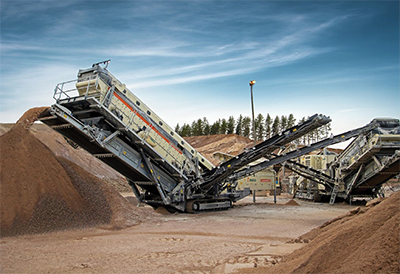 As the economic pinch continues in sectors like construction and mining, there has been an alarming increase in the number of companies let down by underperforming crushing and screening equipment, spares support and technical aftermarket support, according to Pilot Crushtec director of sales and marketing, Francois Marais.
As the economic pinch continues in sectors like construction and mining, there has been an alarming increase in the number of companies let down by underperforming crushing and screening equipment, spares support and technical aftermarket support, according to Pilot Crushtec director of sales and marketing, Francois Marais.
We have fielded a growing number of calls recently from companies using other manufacturers’ equipment, requesting urgent assistance in providing alternatives or support to help them meet their contract obligations,” says Marais. “It appears to us as if many companies have selected equipment based purely on price, rather than its suitability for their application.”
He highlights the devastating impact which these constant – and sometimes catastrophic – technical failures and lack of spare supply have on the performance and reputation of these crushing service providers. With crushing contracts being invariably linked to strict time and output requirements, any downtime can place delivery and fulfilment at risk.
“Even if the equipment can be kept functional, these unexpected repair and maintenance costs can end up rendering a project unprofitable,” he says. “What is happening in these cases is that any savings from the capital expenditure on the equipment is being eaten up by fast-rising operating expenditure.”
Alfieri Holdings ‘supports local’ with a dozen Bell ADTs
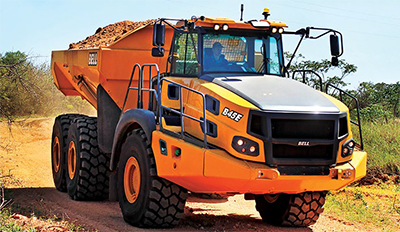 An emerging coal mining group’s decision to invest in Bell Articulated Dump Trucks (ADTs) has a direct downstream benefit for 3 500 employees at Bell Equipment as well as for the more than 1 000 suppliers to the manufacturer who supply a vast variety of components that go into each Bell ADT, said Bell Equipment Group Chairman, Gary Bell, at the official handover of 12 Bell B45E ADTs to the Alfieri Group at its Ikoti coal mine near Breyten in Mpumalanga recently.
An emerging coal mining group’s decision to invest in Bell Articulated Dump Trucks (ADTs) has a direct downstream benefit for 3 500 employees at Bell Equipment as well as for the more than 1 000 suppliers to the manufacturer who supply a vast variety of components that go into each Bell ADT, said Bell Equipment Group Chairman, Gary Bell, at the official handover of 12 Bell B45E ADTs to the Alfieri Group at its Ikoti coal mine near Breyten in Mpumalanga recently.
The ADTs, locally manufactured at Bell Equipment’s factory in Richards Bay, will be used in the coal sector around Breyten, providing meaningful jobs in the area. Bell acknowledged that while the Alfieri Group had a choice of eight or more different manufacturers of haulage vehicles to choose from, its decision to acquire a wholly owned South African product proved yet again that ADTs manufactured and supported by Bell Equipment could compete on the global market and do so with confidence.





